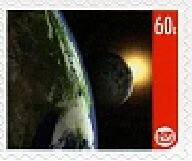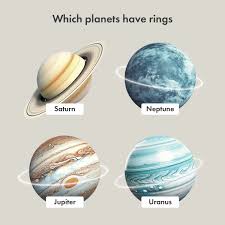Stamp: Solar Eclipse Viewed From Earth Orbit - Sovereign Insurance (Personalized and Private Mail Stamps 2011)
Solar Eclipse Viewed From Earth Orbit - Sovereign Insurance (Personalized and Private Mail Stamps 2011)
01 January (Personalized and Private Mail Stamps ) within release New Zealand : Custom Advertising Labels (CALs) goes into circulation Stamp Solar Eclipse Viewed From Earth Orbit - Sovereign Insurance face value 60 New Zealand cent
| Stamp Solar Eclipse Viewed From Earth Orbit - Sovereign Insurance in catalogues | |
|---|---|
| Colnect codes: | Col: NZ-CAL 2011-28 |
Stamp is square format.
Also in the issue New Zealand : Custom Advertising Labels (CALs):
- Stamp - Auckland City Expo - Sovereign Insurance face value 60;
- Stamp - Binhai New Area, Tianjin Municipality - Financial Center face value 60;
- Stamp - Binhai New Area, Tianjin Municipality - Garden City face value 60;
- Stamp - Briar Patch New Zealand Ltd, Knitting Yarns face value 60;
- Stamp - Brown Kiwi face value 60;
- Stamp - Captain Cook - Christchurch Philatelic Society face value 60;
- Stamp - Central Span Suspension Bridge face value 60;
- Stamp - Christchurch Philatelic Society Centenary face value 60;
- Stamp - Elderly Couple face value 60;
- Stamp - Ernst and Young, Entrepreneur of the Year Award face value 60;
- Stamp - Found the South Pole 2011 - Christchurch Philatelic Society face value 60;
- Stamp - Hang Up Entertainment Services - Clown on Unicycle face value 60;
- Stamp - International Wood Collectors Association - IWCS Conference face value 60;
- Stamp - Intracor Commodity Exports Ltd face value 60;
- Stamp - Jason McDowell, Lugton's Real Estate face value 60;
- Stamp - Joe and Lucy's Wedding face value 60;
- Stamp - Kendelier - Lighting Brilliance face value 60;
- Stamp - King George Hall - Hastings Stamp Collectors Club face value 60;
- Stamp - Kiwi Sanctuary Cape Kidnappers, Hawkes Bay face value 60;
- Stamp - Kiwi Sanctuary Cape Kidnappers, Hawkes Bay face value 60;
- Stamp - Mercy Hospital - Celebrating 75 Years face value 60;
- Stamp - Mercy Hospital - Celebrating 75 Years face value 60;
- Stamp - Mercy Hospital - Celebrating 75 Years face value 60;
- Stamp - Mercy Hospital - Celebrating 75 Years face value 60;
- Stamp - Mercy Hospital - Celebrating 75 Years face value 60;
- Booklet - Mercy Hospital - Celebrating 75 Years Booklet face value 10*60;
- Stamp - Mike and Carlie face value 60;
- Stamp - New Zealand Garden Birds - Sparrow face value 60;
- Stamp - New Zealand Garden Birds - Sparrow face value 60;
- Stamp - New Zealand Garden Birds - Tui face value 60;
- Stamp - New Zealand Garden Birds - Tui face value 60;
- Stamp - Paula Bevege Events, Wellington face value 60;
- Stamp - Pink Peony Flower face value 1.20;
- Stamp - Pipeline and Bay face value 60;
- Stamp - Protectus Numismatist Supplies face value 60;
- Stamp - Queen Mary 2, Visit to Lyttleton face value 60;
- Stamp - Rimutaka Forest Park Trust Logo face value 60;
- Stamp - Roald Amunsden - Antarctic Expedition Centenary face value 60;
- Stamp - Rural River Valley face value 60;
- Stamp - Sherpac - Sherborne Packaging Ltd face value 60;
- Stamp - Sir Lamorek - Pampas Heights Deer Stud face value 60;
- Stamp - Solar Eclipse Viewed From Earth Orbit - Sovereign Insurance face value 60;
- Stamp - Tower Life Insurance Group - Lighthouse face value 60;
- Stamp - Tractor Tyre Track face value 60;
- Stamp - Trademark Zone - Intellectual Property Law Firm face value 60;
- Stamp - Wairakei School - Absolutely Brilliant face value 60;
- Stamp - Walking With Dinosaurs Show, Auckland - Eye face value 60;
- Stamp - What Now Children's Television Show - Red the Robot face value 60;
- Stamp - Wright Stamps face value 60;
- Stamp - Zone IP Intellectual Property Consultants face value 60;
Stamp Solar Eclipse Viewed From Earth Orbit - Sovereign Insurance it reflects the thematic directions:
The Moon is Earth's only natural satellite. It orbits at an average distance of 384,400 km (238,900 mi), about 30 times the diameter of Earth. Tidal forces between Earth and the Moon have over time synchronized the Moon's orbital period (lunar month) with its rotation period (lunar day) at 29.5 Earth days, causing the same side of the Moon to always face Earth. The Moon's gravitational pull – and to a lesser extent, the Sun's – are the main drivers of Earth's tides.
Outer space (or simply space) is the expanse that exists beyond Earth's atmosphere and between celestial bodies. It contains ultra-low levels of particle densities, constituting a near-perfect vacuum of predominantly hydrogen and helium plasma, permeated by electromagnetic radiation, cosmic rays, neutrinos, magnetic fields and dust. The baseline temperature of outer space, as set by the background radiation from the Big Bang, is 2.7 kelvins (−270 °C; −455 °F)
A planet is a large, rounded astronomical body that is generally required to be in orbit around a star, stellar remnant, or brown dwarf, and is not one itself. The Solar System has eight planets by the most restrictive definition of the term: the terrestrial planets Mercury, Venus, Earth, and Mars, and the giant planets Jupiter, Saturn, Uranus, and Neptune. The best available theory of planet formation is the nebular hypothesis, which posits that an interstellar cloud collapses out of a nebula to create a young protostar orbited by a protoplanetary disk. Planets grow in this disk by the gradual accumulation of material driven by gravity, a process called accretion.
The Sun, also known as Sol, is a star at the center of the solar system. It is a white star that gives off different types of energy such as infrared energy (heat), ultraviolet light, radio waves and light. It also gives off a stream of particles, which reaches Earth as "solar wind". The source of all this energy is nuclear fusion. Nuclear fusion is the reaction in the star which turns hydrogen into helium and makes huge amounts of energy. It is a nearly perfect ball of hot plasma.




